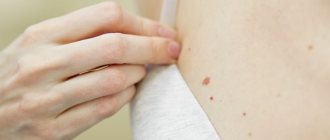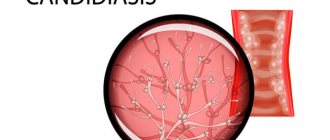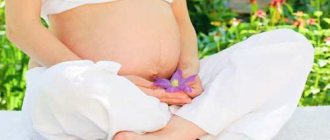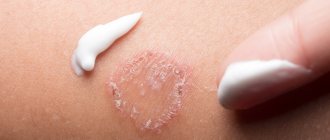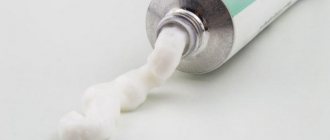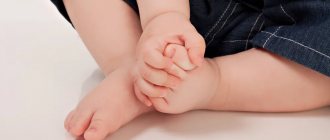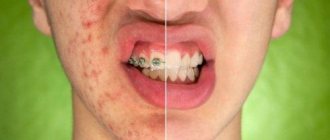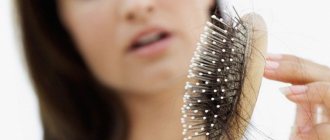Vaginal candidiasis during pregnancy is diagnosed in 9 out of 10 women. The disease develops against the background of hormonal changes and a decrease in the body's protective functions. The causative agent of the infectious disease is a fungus of the genus Candida (Candida). This microorganism is a conditionally pathogenic microorganism that lives on the skin and mucous membranes of almost any healthy person. The activity and vital functions of candida are controlled by the immune system, however, with the slightest disruption, the balance of the intravaginal microflora is disrupted, which leads to the activation of the infectious pathogen.
Candidiasis in pregnant women is mainly diagnosed at the end of the second and beginning of the third trimester. It is important to identify thrush in time and try to treat it before birth. This will help avoid complications not only in the expectant mother, but also in the child, whose risk of infection is very high when passing through the affected birth canal. Treatment of a fungal disease should be carried out under the strict supervision of a gynecologist, who selects medications, taking into account the patient’s position and the individual characteristics of her body.
What is nail fungus during pregnancy?
The body of a pregnant woman has a hard time - hormonal changes occur, and the bulk of internal resources are redistributed for the normal development of the fetus. In this regard, immunity decreases, which leads to fungal infections. The reasons for the appearance of fungus are often as follows:
- wearing tight shoes;
- damage to the skin on the foot;
- diabetes mellitus, skin diseases;
- profuse sweating;
- abuse of flour and sweet products.
The main symptoms of candidiasis in pregnant women
The characteristic signs of thrush during pregnancy begin to worry already at the initial stages of the development of the pathology. Women experiencing a fungal infection experience the following pathological symptoms:
- hyperemia, inflammation and swelling of the external genitalia;
- whitish, cheesy vaginal discharge with an unpleasant, sour odor;
- itching in the genitals, intensifying during movement or sex;
- pain, burning when urinating.
In a chronic course, the symptoms of candidiasis are erased and less pronounced. In any case, if a woman discovers suspicious discharge with a cheesy consistency, but there is no itching or burning, you should still not delay a visit to the gynecologist, because in some cases candidiasis is a consequence of the progression of other diseases that are more dangerous for the unborn child.
What is the danger
Having discovered symptoms of fungus, pregnant women wonder whether the unborn baby will suffer from this. Affected nails serve as a source of rapid proliferation of infection. If an unpleasant disease is not cured, pathogenic microorganisms will penetrate into the deep layers of the skin. Foot fungus is dangerous because it significantly suppresses the immune system of a pregnant woman. To treat onychomycosis, only antifungal antibiotics are suitable, which are harmful to the baby’s health because they cause developmental defects.
It is strictly forbidden to ignore the symptoms of fungal infections or try to get rid of them on your own, since there is a possibility of infecting the baby through the blood coming from the mother to the fetus. It is necessary to consult a dermatologist for an accurate diagnosis. The doctor will develop a treatment regimen and prescribe a set of safe drugs that are active against mycosis.
- 10 Best Ways to Track an Android Phone
- When will Russia allow flights abroad?
- 7 myths about the sun and skin
Prevention
To avoid recurrence of nail fungus, you should adhere to the following rules:
- maintaining personal hygiene: do not use other people’s household items, socks, towels;
- dry and disinfect shoes daily;
- frequent change of bed linen with mandatory ironing;
- comfortable shoes for the season, without high heels, made from natural fabrics;
- when visiting public swimming pools and saunas, take rubber slippers with you;
- During the therapy period, it is necessary to disinfect pedicure items;
- use of preventive antifungal varnishes;
- timely consultation with a doctor if you suspect a disease.
Nail fungus is an unpleasant problem that requires a pregnant woman to pay increased attention to her health. With early diagnosis and compliance with medical prescriptions, the consequences of the disease can be avoided and the undesirable effects of medications on the child can be reduced.
Treatment of fungus during pregnancy
All oral antifungal drugs are contraindicated for use during pregnancy and lactation. The laser method of fungus removal is also prohibited. Depending on the stage of infection, doctors recommend the use of systemic therapy with topical medications. Drug treatment can prevent the process of infection of healthy nails and alleviate the condition of the expectant mother, who suffers from itching, allergic rashes, and unpleasant odor.
Completely safe methods of treating nail fungus during pregnancy involve surgery. Surgical removal is resorted to if the area of skin around the diseased nail is severely affected. The problem of the feet is solved by removing the diseased plates or parts thereof, followed by polishing and applying nail prostheses. The patient must then come to the hospital for nail treatment.
Types, forms and stages of fungal infections
Types of pathologies of fungal etiology:
- onychomycosis - this group includes damage by microorganisms of various types (yeast-like, mold);
- mycosis - a disease caused by dermatophytes.
The disease manifests itself in the following forms:
- Distal subungual fungus. This type is one of the most common. The pathology is localized at the tip of the nail and spreads to its entire surface. Signs of damage are white, yellow, gray spots on the plate.
- Proximal onychomycosis. The disease begins with the skin around the nail and gradually spreads to it. At the site of damage, delamination and fragility are observed.
- Superficial white fungal infection. Changes begin in the center of the nail or at the edge. There are white spots on the surface of the plate. This species is often found on the legs.
There are several stages of the disease:
- The first is characterized by the absence of manifestations of the fungus. Objectively, dim spots or stripes can be identified. The disease can be suspected based on test results.
- Second. In this form of development of the disease, the nail plate has noticeable signs of onychomycosis: loss of shine, change in color, change in the lateral area of the nail.
- At the third stage, stratification of the affected area occurs. The plates acquire a yellow or gray tint, crumble and become brittle.
Antifungal drugs during pregnancy
Faced with the first sign of the disease, the expectant mother immediately wonders how to treat nail fungus during pregnancy. In mild stages of onychomycosis, while the nail plate has not yet begun to peel off and crumble, a special ointment and other medications for home treatment can help. The differences between them lie in the spectrum of action, method of application, and dosage.
Ointments
An effective remedy for nail fungus during pregnancy is antifungal ointment. As a result of its use, not only foci of infection are eliminated, but the development of the disease is also suppressed. For the treatment of mycosis in pregnant women, the following are suitable:
| Comparative characteristics | Lamisil | Mikozan |
| Pharmacodynamics | Stops the proliferation of pathogenic microflora and restores damaged tissue. | Creates unfavorable conditions for the life of fungi, destroying their lipid membrane. |
| Indications | Foot fungus, athlete's foot, dermatophytosis, yeast and Candida infections. | Superficial mycosis, onychomycosis, cutaneous candidiasis, infectious lesions of the dermis. |
| Directions for use and dosage | Before the procedure, you need to clean and dry the treated area of the skin. The medication is applied 1-2 times a day by rubbing the mixture into the affected area. | In the morning and at night, spread a little mixture on the affected skin. Treatment of nail fungus during pregnancy lasts at least 4 weeks. |
| Advantages | The ointment belongs to the class of allylamines, which kill many harmful fungi, yeasts and microbes. | Mikozan forms an invisible film on the nail, increasing its density. |
The drug Tinedol
When talking about such topics as nail fungus and pregnancy, experts always mention the drug Tinedol. It is an ointment for the feet that eliminates the fungus and its symptoms. The medication consists of natural ingredients and is indicated for mycosis of the nails and feet of various etiologies. The main advantage of the medicine is its ability to kill fungus and have a healing effect on damaged nail plates and skin.
If additional signs of illness occur during pregnancy - peeling, an allergic reaction, then Tinedol ointment can quickly remove them without exposing healthy skin to the risk of infection. The drug should be applied to a clean, dry surface twice a day with massaging movements until completely absorbed. Since the substance contains safe ingredients, it does not cause any side effects.
- Vegetable stew recipe
- How to remove the dial tone on MTS
- Discounts for pensioners in Moscow cinemas - features of preferential admission
Creams
An effective treatment option for onychomycosis is an antifungal cream. Unlike its analogues, the product penetrates more gently and quickly into the source of infection, helping a pregnant woman cope with unpleasant symptoms. During pregnancy, Exoderil is often prescribed. This drug is active not only against onychomycosis, but also against fungi belonging to the group of dermatophytes and the genus Candida.
The active ingredient of the cream, naftifine, destroys direct pathogens of fungal infections, preventing infection of the body. The advantage of the drug Exoderil is its ability to block the cell membranes of parasites and have an anti-inflammatory effect on the affected layer of the dermis. The cream should be applied to the foot once a day until healing.
Special varnishes
To cure toenail fungus during early pregnancy, doctors recommend applying nail polish. Unlike creams and ointments, the product penetrates deep into the keratin layer of the nail, forming a protective film on the plate. The list of frequently prescribed varnishes for pregnant women includes:
- Loceryl is destructive to yeast, mold microorganisms and dermatophytes. The main component works for any degree of development of the disease. The therapeutic course is 4-12 months. The varnish is used 1-2 times a week, after cleaning the nail with a file.
- Mycozan - fights a large area of fungal infection due to rye extract. The medication reduces the porosity of the plates and worsens the conditions for the spread of parasites. Therapy lasts 2-4 months, the set includes disposable files.
Description of the consequences of the disease
It is rare, but it happens that Candida yeast fungi penetrate the placental barrier, contributing to intrauterine infection of the fetus. But basically, a child becomes infected with thrush at the time of birth, when he moves through the birth canal affected by the fungus. Infection during childbirth can cause severe damage to the skin and mucous membranes, and the membranes of internal organs.
Candidiasis is dangerous not only for the unborn child, but also for the pregnant woman herself. Fungi negatively affect the condition of the tissues of the vagina and birth canal, helping to reduce their strength and elasticity. Therefore, immediately at the time of birth, the risk of serious injuries increases, which can cause heavy blood loss and other complications.
In addition, untreated vaginal candidiasis often causes the progression of erosive processes in the uterus. Erosion can subsequently negatively affect women's health and cause infertility.
Traditional methods
Having decided to turn to alternative medicine, the expectant mother should know that many folk remedies have a lot of contraindications. Tea tree oil, which has an antiseptic, anti-inflammatory and antifungal effect, acts as a safe component that helps cope with fungus . The treatment procedure is carried out as follows:
- The affected areas are thoroughly cleaned with laundry soap.
- A foot bath is made with the addition of salt, soda or vinegar.
- The limbs are well dried with a clean towel.
- The nail plate eaten by mycosis is cut off as much as possible.
- Using a cotton swab, 1-2 times a day, lubricate the sore nails with 1 drop of oil, rubbing in the medicine. The course of treatment is 12 weeks.
Propolis solution
According to user reviews, propolis solution has proven itself well in the treatment of nail fungus. The drug is moistened at the pest's location, applying a swab with the solution for several minutes. This should be done daily, 2-3 procedures. Propolis relieves itching, flaking, softens the skin, has a regenerative effect, and prevents the proliferation of pathogenic flora.

